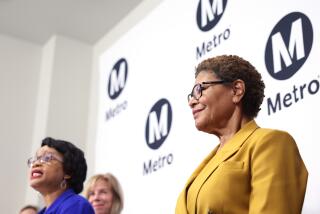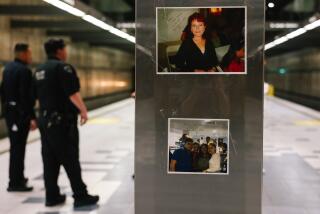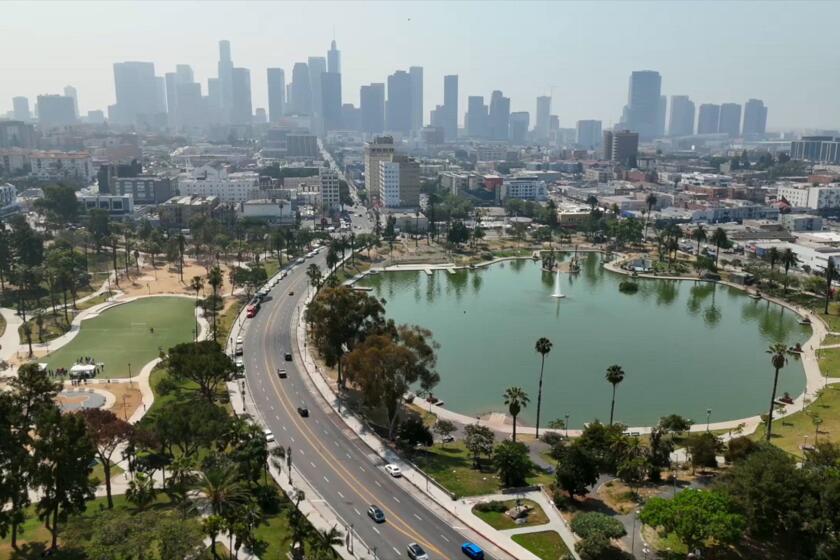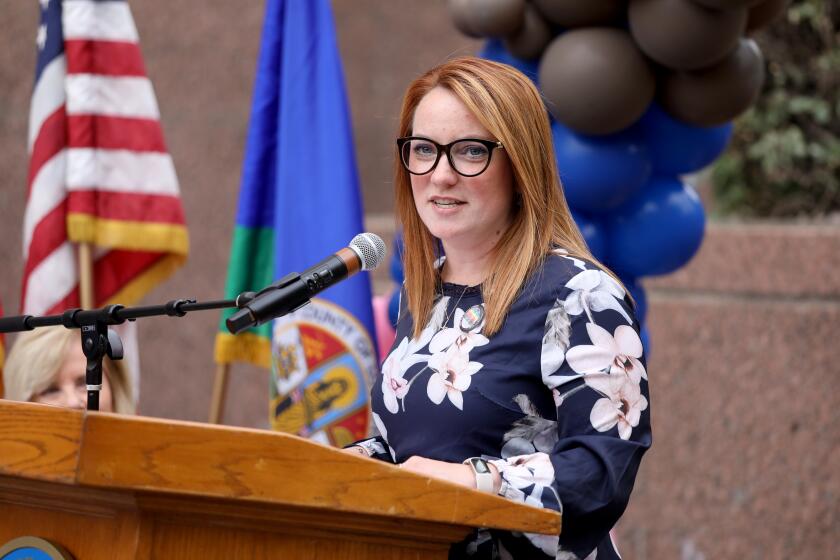Editorial: Is L.A. getting serious about safer streets?

Seven years ago Los Angeles adopted Mobility Plan 2035, an ambitious road map to make city streets more bikeable, walkable and safer over two decades. But the plan has been hobbled by a lack of political will and bureaucracy, and only 3% of the 3,137 miles slated for bike, bus and pedestrian upgrades have been modified. At this pace, it will take nearly 200 years to fulfill the plan’s vision.
Now, with the threat of a ballot measure forcing its hand, the City Council may finally be ready to turn the plan into a mandate.
Earlier this year, transportation and environmental activists frustrated by the slow pace of progress decided to take the matter into their own hands. The groups began collecting signatures for the Healthy Streets LA ballot measure that would require the city to add the promised bus, bike and pedestrian improvements whenever streets are repaved. They expect to have enough signatures to qualify the measure for the 2024 ballot.
But Angelenos may not have to wait that long. City Council President Nury Martinez recently called for an ordinance that would do the same thing as the Healthy Streets LA measure. Martinez said with traffic deaths increasing, Angelenos shouldn’t have to wait. Her motion, backed by four council colleagues, would direct the city attorney to write an ordinance based on the ballot measure that would require that city departments add mobility plan improvements when streets are resurfaced.
It’s crazy that Angelenos would have to go to the ballot to force the city to implement its own plan to build bike and bus lanes and safer streets.
That’s an important change. Too often, council members and city departments have ignored or refused to implement changes called for in the mobility plan. Sometimes that’s because city departments don’t coordinate well and miss opportunities to add improvements. Sometimes that’s because people oppose the changes — L.A.’s culture is still car-centric and some drivers fight efforts to slow traffic, even if the project can save lives and improve communities.
In 2017, after a teenager was killed crossing Vista del Mar near Dockweiler State Beach, the city removed traffic lanes and redesigned the street to make it safer for beachgoers returning to their cars. But commuters browbeat city leaders until they reversed the project. Since then, two more people have been killed by vehicles while crossing the street.
The City Council has already adopted the vision and policy for safer, more multimodal streets; there’s no reason to keep delaying the projects. Mobility plan improvements should become part of routine road maintenance.
Martinez’s motion would go further than the ballot measure. She also wants the city to create a unified project coordination office to make sure city infrastructure projects not only incorporate mobility plan elements but also crosswalks, bus shelters, streetlights, stormwater infrastructure, sidewalk repairs and street trees. And the office would develop a multiyear workplan that prioritizes upgrading corridors that have the highest rates of traffic deaths and greatest numbers of transit users.
I’m a busy person. I’ve got places to be, and traffic can really gum up my schedule.
That makes a lot of sense. The communities with the most traffic deaths are often lower-income neighborhoods with lots of people walking, biking or relying on transit. They have streets designed to move cars very fast and lack basic safety infrastructure such as crosswalks, smooth sidewalks and streetlights.
If Los Angeles leaders truly want to make the vision of walkable, bikeable, livable neighborhoods a reality, it will take more than simply restriping the streets. It will take a holistic investment in community infrastructure, as Martinez’s motion calls for.
Yes, it’s frustrating that residents had to organize a ballot measure campaign to prod city leaders to carry out their own mobility plan. And it’s not a done deal yet. The City Council has a choice — it can adopt its own ordinance, which could be watered down or undone by future city councils. Or, under the city’s initiative law, it could adopt the language of the Healthy Streets LA measure when it qualifies, most likely this summer, rather than send it to the ballot. That would mean any future amendments would have to go to voters.
Let’s not wait another seven years. Los Angeles should have safer, more pleasant streets starting now.
More to Read
A cure for the common opinion
Get thought-provoking perspectives with our weekly newsletter.
You may occasionally receive promotional content from the Los Angeles Times.







